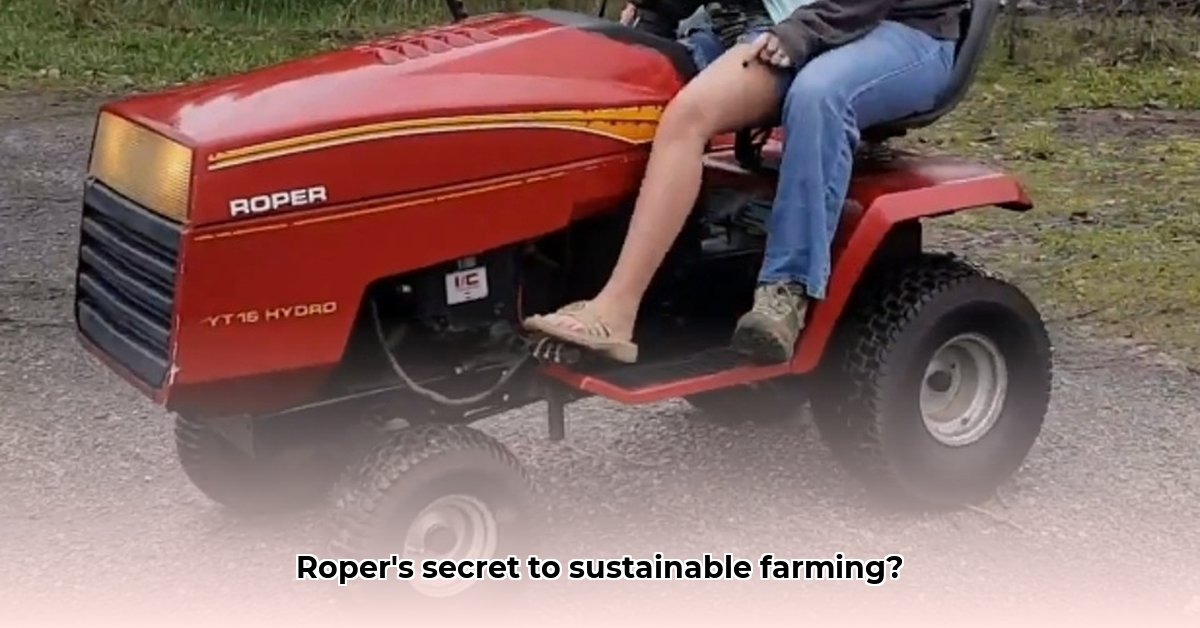
The familiar whir of a Roper lawn tractor, a sound echoing across American backyards for generations, speaks volumes beyond simple lawn maintenance. It's a story interwoven with the broader narrative of agricultural technology, sustainability, and the ever-shifting landscape of corporate influence. For further comparison, see information on other brands like John Deere. This isn't just about fixing a mower; it's about understanding a piece of history and its implications for our present and future approach to sustainable practices.
Roper's Rise and Fall: A Reflection of American Industry
For decades, the Roper lawn tractor was a ubiquitous symbol of suburban life, often sold through the retail giant Sears. This widespread adoption speaks to Roper's design success and market penetration. But how did a seemingly simple machine become emblematic of a larger societal shift? Was this success inherently sustainable, or did it reflect a different era's priorities? This question underscores the need to examine Roper's trajectory within the wider context of evolving American industry and environmental awareness.
Doesn't the longevity of these machines—seen in countless restorations and ongoing use—reflect a surprising level of inherent durability? This inherent durability, a crucial component of sustainability, was perhaps initially an unintended byproduct of design choices focused on functionality and affordability. However, it inadvertently created a legacy of repairability and longevity that resonates strongly today.
The Corporate Carousel: Mergers and the Sustainability Question
The story of Roper is one of corporate evolution, marked by shifts in ownership. Initially a stalwart independent brand, Roper was eventually absorbed into the industrial giants General Electric (GE) and later Electrolux. This pattern of larger corporations acquiring smaller entities is a familiar trope across numerous industries. But did this corporate consolidation ultimately benefit, or hinder, the integration of more environmentally conscious manufacturing practices? Did the larger parent companies prioritize sustainability over profit margins? The answer is complex and requires a nuanced analysis of the historical record.
Were there missed opportunities to integrate greener materials or more sustainable manufacturing processes during these periods of corporate ownership? This is a key question that requires further investigation of both Roper's internal archives and the general industrial practices of that time. It would be a fascinating study to compare Roper's environmental footprint with similar competitors during its various phases of ownership.
Unearthing the Past: A Search for Environmental Practices
Determining Roper's historical commitment to sustainability requires meticulous research. Pinpointing precise data on their historical environmental practices proves challenging, as full transparency on such matters was not always a business priority. However, by analyzing surviving manufacturing records, company advertisements, and comparing their methods to competitors, we can start to piece together a more complete picture. Did Roper prioritize using eco-friendly materials? Were their tractors designed for ease of repair and longevity, thus reducing waste? These questions must be addressed through extensive archival work and potentially cross-referencing with industry journals and publications of the era.
How would a comparative analysis of manufacturing processes between Roper and its competitors reveal the prevalent industry standards and any unique choices made by Roper regarding materials and manufacturing methodologies? The answers to these questions are crucial in assessing the extent of Roper's contribution to, or departure from, contemporary sustainability practices.
The Path Forward: Lessons Learned and Future Practices
The story of Roper offers valuable lessons for contemporary manufacturers. Examining both its commercial successes and its environmental impact provides a framework for building more sustainable equipment of the future. Questions surrounding material usage, ease of repair, and end-of-life recyclability must be integral components of the design process. This applies particularly to agricultural equipment, a sector deeply intertwined with environmental considerations.
How can we learn from past design choices, specifically those reflecting an era's lack of focus on environmental concerns, to create modern sustainable products? By scrutinizing Roper's legacy, we can extract valuable knowledge applicable to designing future gardening and agricultural equipment, emphasizing efficient resource management.
Three Pivotal Points:
- Roper's market success reflected a broader societal shift in American suburbia but its environmental impact remains an open question.
- The corporate acquisitions impacted Roper's trajectory without clear evidence of improved or diminished sustainability initiatives.
- Comprehensive research—combining historical analysis with examination of available machinery—remains essential to fully understand Roper's lasting environmental legacy
This article emphasizes the need for continued research into the historical environmental impact of seemingly ordinary items, offering a compelling narrative for future studies on sustainable practices.